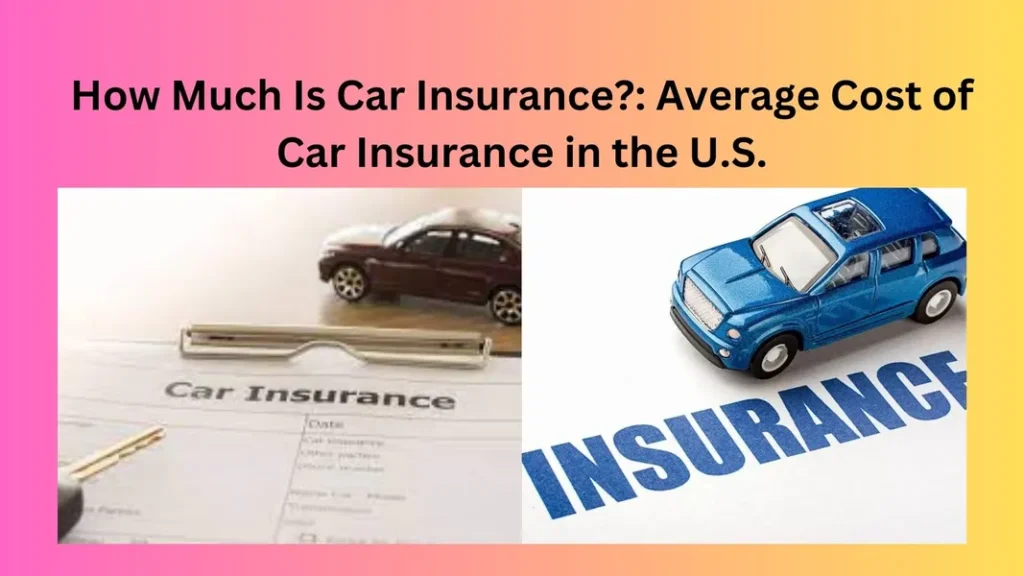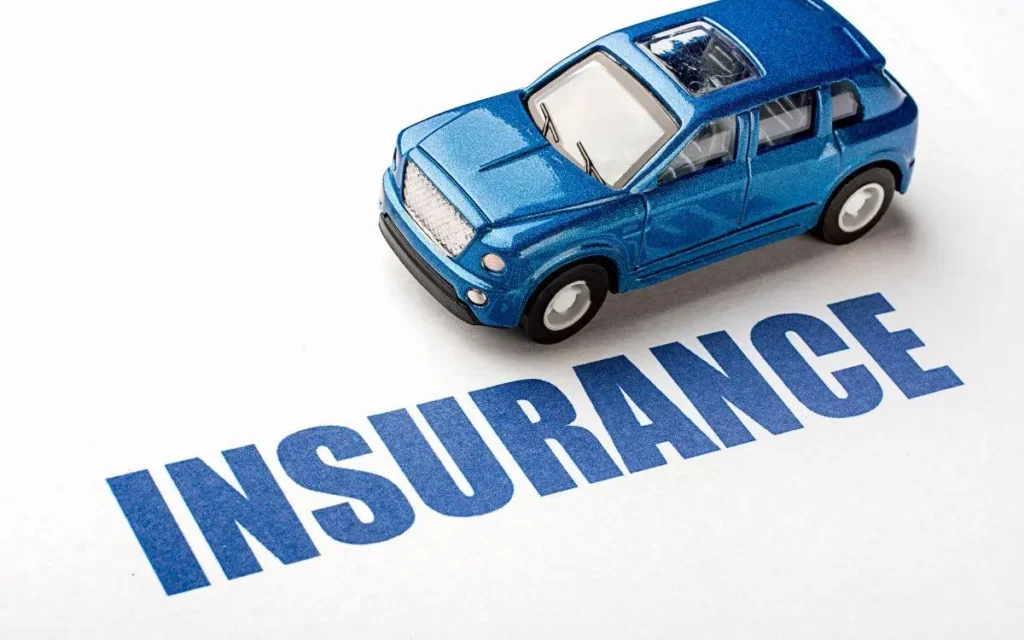Car insurance. It’s one of those things we all need, but no one really wants to pay for. But have you ever wondered exactly how much you should be paying? Or why your friend across town pays less, even though you both drive similar cars? Well, buckle up! We’re diving into the world of car insurance costs in the U.S. We’ll explore the average price you might pay, what affects your rates, and a few tips to keep those premiums as low as possible. Ready to hit the road?

What Is Car Insurance?
Before we get into the dollars and cents, let’s quickly break down what car insurance actually is. In its simplest form, car insurance is a contract between you and an insurance company. You pay them a premium, and in exchange, they’ll help cover the cost of any damage or liability if something happens to your vehicle or others on the road.
But here’s the kicker: how much you pay depends on a lot of factors.
Why Do Car Insurance Rates Vary?
Ever wondered why car insurance feels like a puzzle? There are many pieces that come together to determine your rate. Let’s take a look at the most common factors that affect how much you pay for car insurance:
1. Your Age
Younger drivers, especially those under 25, tend to pay more. Why? Because statistically, younger drivers are more likely to get into accidents. If you’re a teen or young adult, you might feel a little singled out, but insurance companies are just playing the numbers game.
2. Where You Live
Yes, your ZIP code can have a huge impact on your car insurance rate! Live in a big city? You might pay more because urban areas have higher chances of accidents and theft. On the flip side, rural areas often have lower rates.
3. Your Driving Record
If you’ve got a squeaky-clean driving record, congrats! You’re likely to pay less than someone with speeding tickets or accidents in their past. Insurance companies see a history of accidents as a red flag.
4. The Car You Drive
Here’s something a lot of people don’t think about: the car itself plays a huge role. Driving a luxury vehicle or a sports car? Expect a higher premium. Cars that are expensive to repair or are more likely to be stolen will naturally cost more to insure.
5. Your Credit Score
Yes, believe it or not, your credit score can affect your car insurance. Insurers often look at your credit to help predict how likely you are to file a claim. The better your score, the better your rate.
6. Coverage Choices
How much coverage you choose also impacts your rate. If you opt for full coverage, which includes liability, collision, and comprehensive, you’ll pay more than someone who just goes for the bare minimum liability.
Average Cost of Car Insurance in the U.S.
So, let’s get down to the numbers. What’s the average cost of car insurance in the U.S.?
According to recent data, the national average cost for full coverage car insurance is around $1,700 per year. For minimum coverage, which covers the basics like liability, it averages out to about $600 per year.
Of course, these are just averages. Your actual cost could be much higher or lower, depending on the factors we just talked about.

Full Coverage vs. Minimum Coverage: What’s the Difference?
When people talk about “full coverage,” they mean a policy that covers both liability (the damage you cause to others) and damage to your own vehicle (like in the case of an accident or natural disaster).
On the other hand, minimum coverage only includes liability insurance, which is required by law in most states. It covers other people’s injuries or damage in an accident you cause but won’t pay for damage to your own car.
Average Costs by State
Where you live makes a big difference in your premium. For example, Michigan often ranks as the most expensive state for car insurance, with average premiums reaching over $2,800 per year for full coverage. Meanwhile, states like Vermont and Maine tend to be more affordable, with full coverage premiums sitting around $1,000 per year.
Wondering where your state stands? Here’s a quick breakdown:
- California: Around $1,800 per year
- Texas: Roughly $1,900 per year
- Florida: Expect about $2,300 per year
- New York: Typically around $2,000 per year
Why Are Some States More Expensive Than Others?
Several factors can make one state more expensive than another. These include the cost of medical care, repair costs, and even the number of uninsured drivers on the road. States with no-fault insurance laws, like Michigan and Florida, tend to have higher premiums because they require insurers to cover a broader range of expenses after an accident.
Different Types of Car Insurance Coverage
When it comes to car insurance, it’s not a one-size-fits-all deal. There are several types of coverage, each designed to protect you in different ways. Let’s go over the most common ones:
1. Liability Coverage
Liability coverage is required in most states. It covers damage you cause to others in an accident. This includes property damage and medical expenses. The key thing to remember is that it doesn’t cover damage to your own car.
2. Collision Coverage
Collision insurance helps cover the cost to repair or replace your vehicle if you’re involved in an accident with another car or object. This is optional, but if you have a loan or lease on your car, your lender might require it.
3. Comprehensive Coverage
This covers events that aren’t related to car accidents, like theft, vandalism, or natural disasters (think floods or hail damage). It’s often paired with collision coverage.
4. Uninsured/Underinsured Motorist Coverage
Unfortunately, not everyone on the road is properly insured. This type of coverage protects you if you’re in an accident with someone who doesn’t have enough insurance to cover your expenses.
5. Personal Injury Protection (PIP)
PIP covers medical expenses for you and your passengers, no matter who caused the accident. It can also help with lost wages if you’re unable to work due to an injury.
Factors That Can Lower Your Car Insurance Premiums
Now that we’ve covered what drives your insurance costs up, let’s talk about some ways you can save money. Who doesn’t love saving a few bucks, right?
1. Bundle Your Policies
Do you have homeowners or renters insurance? Many companies offer discounts if you bundle multiple policies together. It’s a simple way to save without sacrificing coverage.
2. Increase Your Deductible
A higher deductible means you’ll pay more out of pocket if something happens, but it also means lower premiums. If you’re a safe driver and don’t expect to file many claims, this could be a smart move.
3. Take Advantage of Discounts
Most insurance companies offer various discounts. These could include safe driver discounts, good student discounts, or even discounts for taking a defensive driving course. It’s worth asking your provider what discounts you qualify for.
4. Drive Less
Some insurers offer low-mileage discounts. If you’re working from home or don’t drive your car much, let your insurer know. Fewer miles on the road means fewer chances of an accident, which can lead to a lower premium.
5. Improve Your Credit Score
Remember, your credit score plays a role in determining your premium. If you can raise your score by paying down debt or improving your credit history, you could see your insurance costs drop.
How to Shop for Car Insurance
If your current car insurance policy isn’t cutting it, shopping around is a great way to potentially save some money. Here are a few tips for getting the best rate:
1. Compare Multiple Quotes
Don’t just settle for the first quote you get. Reach out to several insurers to compare rates and coverage options.
2. Review Coverage Options
Make sure you’re comparing apples to apples. A cheaper policy might leave you underinsured. Always check to ensure the coverage levels are what you need.

3. Read Reviews
Before signing up with a new insurance company, read customer reviews to make sure they have a good reputation for handling claims and customer service.
Conclusion
So, how much is car insurance? The truth is, it depends. Your age, location, driving record, and even the car you drive all factor into what you’ll pay. On average, you can expect to shell out around $1,700 a year for full coverage, but that number could be higher or lower based on your specific situation. By understanding the factors that affect your premium and shopping around, you can find the right coverage for your needs without breaking the bank.
FAQs
1. What’s the cheapest state for car insurance?
Vermont and Maine are often cited as some of the cheapest states for car insurance, with average premiums around $1,000 per year for full coverage.
2. Can I lower my car insurance by driving less?
Yes! Many insurers offer low-mileage discounts if you drive less than a certain number of miles per year.
3. Does my credit score affect my car insurance?
Yes, in many states, insurers use your credit score as a factor in determining your premium.
4. Is full coverage necessary?
It depends. If you have a loan or lease on your car, full coverage may be required. Otherwise, it’s up to you to decide if the added protection is worth the extra cost.
5. Can I get discounts for being a safe driver?
Absolutely. Many insurance companies offer discounts for drivers with clean records, and some even offer discounts if you install a telematics device to monitor your driving habits.